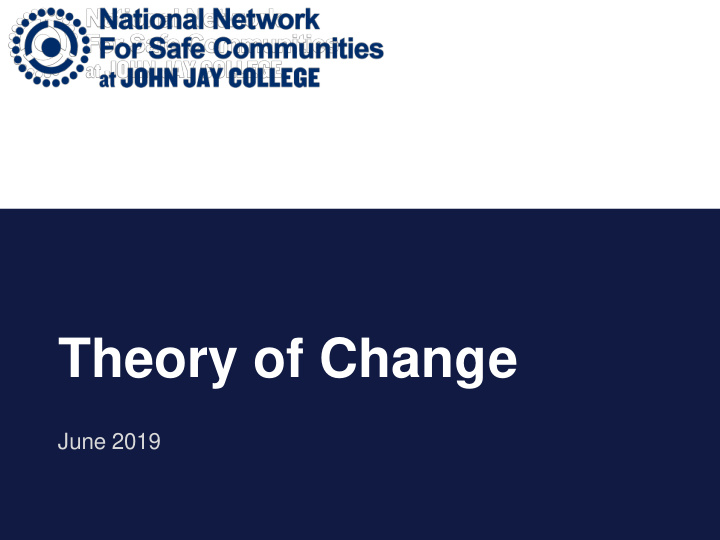



INTIMATE PARTNER VIOLENCE INTERVENTION Problem-Oriented Policing Conference Tempe, AZ October 25, 2016 Theory of Change June 2019
Onboarding NNSC Staff • What we do. • What we’ve done. • How we did it.
NNSC’s Theory of Change • Pick an important, intractable problem. • Assemble front-line coalition of the willing. • Unpack the problem. • Design and implement solution. • Create new facts on the ground. • Use them to drive change.
Policy Test 1. Will it make a big difference? 2. Will it happen quickly? 3. Can we make it happen? 4. Do we want to?
Additional Accomplishments • Range of proved interventions, recognized as most effective there is • Put an end to a whole range of “violence prevention” • Saved huge number of lives, vast amount of pain and trauma
Additional Accomplishments • Very few high-risk people • Changed understanding of community • Sank “zero tolerance” • Reframed “offenders” in terms of fear, victimization, trauma • Move focus off individuals to groups • Sank idea of “gangs”, moved focus to violence
Additional Accomplishments • Reinvent deterrence • Demonstrate humanity and rationality of offenders • Make informal social control practical • Demonstrate real common ground between warring parties
Additional Accomplishments • Reinvent “social services” • After 50 years, finally figured out a way to make intimate partner violence about the actions and accountability of offenders rather than the failings of victims • Moved recognition of race and history into policing - Terry Cunningham
Additional Accomplishments • Establish action research framework and academic/practitioner partnerships • Invent new model and effectiveness for “technical assistance“ • Established this office as unique in its relationships with disparate constituencies, respect for and from them, and ability to build bridges and get work done.
Recommend
More recommend